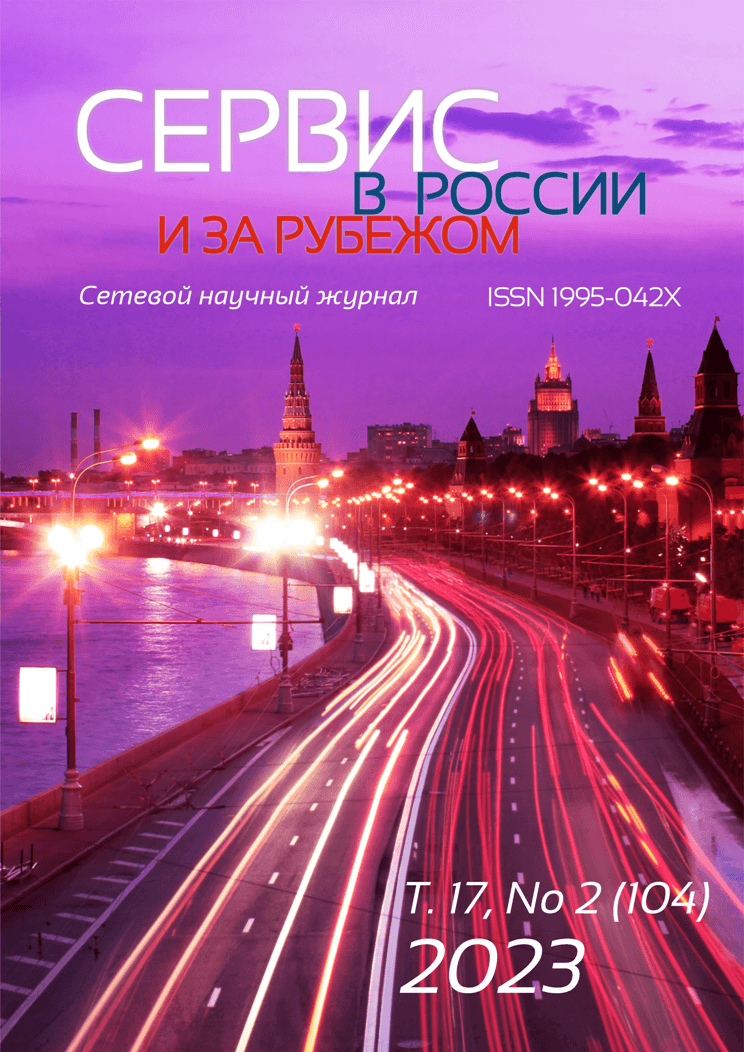Features of the geography of Michelin restaurants
DOI:
https://doi.org/10.5281/zenodo.8115242Keywords:
gastronomic tourism, restaurant tourism, Red Guide, Michelin restaurants, tourist macro-region, accommodation, geographyAbstract
The rapid development of gastronomic tourism in the world is of increasing interest in the study of its structure and features, manifested in a particular tourist destination. The lack of articles on restaurant tourism as one of the areas of gastronomic tourism and, especially, restaurants included in the Michelin Red Guide, determined the choice of the research topic. The article is devoted to the actual features of the geography of Michelin restaurants. In modern conditions, when an important motive for tourist trips is getting impressions, catering enterprises become a significant factor in choosing not only the direction of the trip, but also the tourist route itself. At the same time, restaurants included in the Michelin rating have a competitive advantage. The restaurants included in the Guide are a place of attraction for gourmets and gourmets. This is a sign of quality for them, and, therefore, restaurants act as a tourist resource included in the tourist product. Many tourists deliberately travel to countries where there are Michelin-starred restaurants for the purpose of visiting them. The article discusses the main features of the placement of Michelin restaurants, both included in the rating and awarded Michelin stars, by UNWTO tourist macro-regions. The authors of the article draw attention to territorial disproportions in the number of restaurants and their star rating. Based on a comparative analysis, subregions and countries located at different poles in terms of the availability of Michelin restaurants were identified. The peculiarities of the geography of Michelin restaurants revealed by the authors make it possible to form tourist products taking into account their location.
Downloads
References
Балынин К.А. Аспекты диверсификации гастрономического туризма // Сервис в России и за рубежом. 2017. Т.11. №1(7). С. 97-108. DOI: 10.22412/1995-042X-11-1-9.
Драчёва У.Л., Христов Т.Т. Гастрономический туризм: современные тенденции и перспективы // Российские регионы: взгляд в будущее. 2015. №3(4). С. 36-50.
Иванов В.Д. Гастрономический туризм как популярное направление в туристической индустрии // Физическая культура. Спорт. Туризм. Двигательная рекреация. 2018. Т.3. №2. С. 105-113.
Лагусев Ю.М., Балынин К.А. Гастрономические бренды как средства продвижения дестинаций // Сервис plus. 2016. Т.10. №2. С. 9-16. DOI: 10.12737/19453.
Максимов Д.А., Смирнова Е.И., Тугуши В.А. Гастрономический туризм в России: особенности и перспективы развития // Вестник Алтайской академии экономики и права. 2022. №6-2. С. 292-298. DOI: 10.17513/vaael.2279.
Маленцова П.С., Тишкина А.Г. Условия и организация гастрономического туризма во Франции // Парадигма: философско-культурологический альманах. 2018. №28. С. 147-163.
Пахарь В.В. Состояние и направления развития гастрономического туризма в мире и в России // Международный научно-исследовательский журнал. 2021. №7(109). Ч.3. С. 138-142. DOI: 10.23670/IRJ.2021.109.7.095.
Пышкина В.А., Жаров В.Г. «Звезды Мишлен» и клиентский сервис // Вестник Ассоциации вузов туризма и сервиса. 2020. Т.14. №2(2). С. 199-207.
Рунтова М.В. Эволюция сервиса // Современные проблемы туризма и сервиса: Сб. ст. науч. докладов по итогам Всерос. науч.-практ. конф. М.: РГУТИС, 2019. С. 134-138.
Суслова И.А., Лустина Т.Н., Панова А.Г. Состояние и тенденции формирования элементов гастрономического туризма в России // Сервис plus. 2018. Т.12. №3. С. 13-25. DOI: 10.24411/2413-693Х-2018-10302.
Сычева В.О., Шпенькова К.С. Условия развития гастрономического туризма в России и в мире // Концепт. 2014. №7. С. 126-130.
Терехова Ю.С., Нехаева Н.Е. Понятие гастрономического туризма и его роль в брендинге территорий // Огарев-Online. 2016. №1(66). С.8.
Шерешева М.Ю. Событийный туризм и нематериальное культурное наследие (на примере Владимирской области) // Современные проблемы сервиса и туризма. 2016. Т.10. №3. С. 41-48. DOI: 10.12737/21099.
Щербакова Н.В., Жданова О.В. Гастрономическая идентичность как инструмент продвижения туристской дестинации // Сервис в России и за рубежом. 2019. Т.13. №1(83). С. 125-135. DOI: 10.24411/1995-042X-2019-10110.
Downloads
Published
How to Cite
Issue
Section
License
Copyright (c) 2023 Kitsis, V. M., Sotova, L. V., & Zavyalova, D. D.

This work is licensed under a Creative Commons Attribution-NonCommercial-ShareAlike 4.0 International License.












